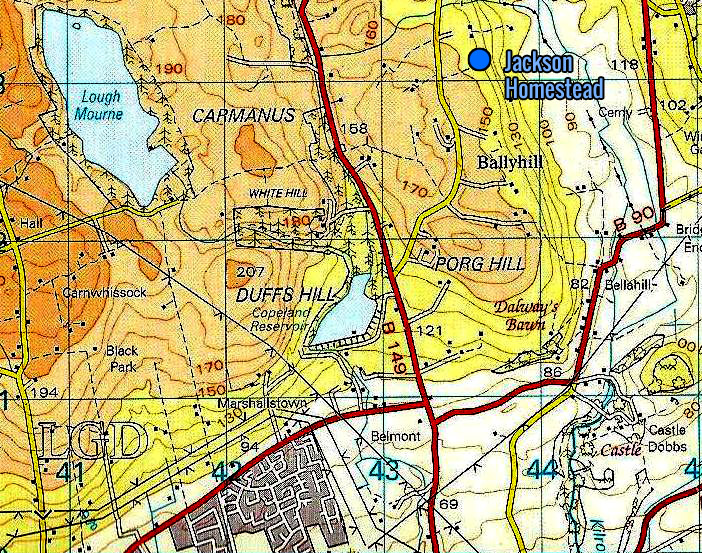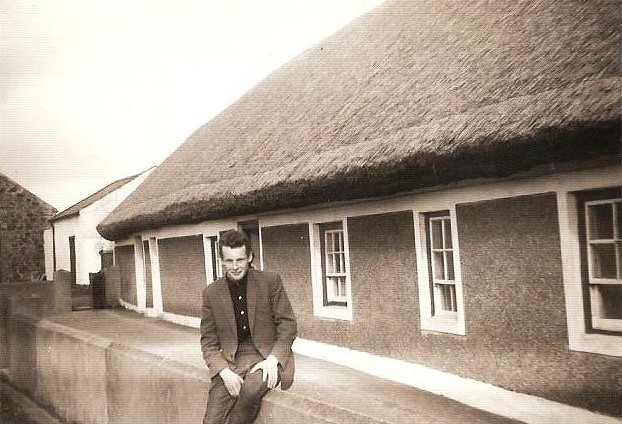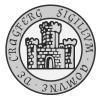Seventh President of the United States of America Andrew Jackson, dubbed the “people’s president”, has humble family roots in Carrickfergus.
He was born in the Waxhaws region of the Thirteen Colonies on 15 March 1767 – more or less where the border between North and South Carolina is today. Orphaned at a young age and becoming quickly involved in the American Revolutionary War, Jackson became a national hero for his command during the British defeat at the Battle of New Orleans some years later in the War of 1812, in which he was a Major General. His roots as the first US President of Ulster-Scots descent (which is usually called “Scots-Irish” in the US) are much less celebrated.
Elizabeth (neé Hutchinson) and Andrew Jackson were Presbyterian Ulster-Scots settlers. The Jackson family allegedly originated from the East Riding of Yorkshire, and the Hutchinsons from Wigtownshire in Scotland (now part of modern Dumfries and Galloway) and settled the Carrickfergus area during the plantation of Ireland under King James I. Andrew senior was born in the Bellahill townland of Carrickfergus, and Elizabeth was born in Carrickfergus town. Other Jacksons of the same clan settled areas of counties Londonderry, Down and Armagh most notably. The extended Jackson family is now widespread in modern Northern Ireland.

The mother and father of the future US President had a farm and plot of land in the Bellahill townland, and were most likely tenants of the Dalway family who owned most of the land in that area, alongside Dobbs land to the south – indeed the family farm was in close proximity to both Dalway’s Bawn and Castle Dobbs. While not poor, the Jacksons were certainly not considered affluent, and lived a modest life. They were weavers and linen drapers by occupation, which were reliable jobs in Ulster at this time. They were devout Presbyterians and worshipped at Ballycarry Presbyterian Church, a mile to the north-east.
The area around the Jackson homestead is still rural today, and the ruins of the house can still be found along an unmaintained trail previously known as “Bullock’s Walk”. The trail to the ruin now runs through private homes and farms, so a detour across several fields (again, private) would be required to reach the site. Jackson descendents allegedly farmed in the area until well into the 20th century, and the Jacksons held the old farmhouse to the last – A Samuel Jackson inhabited the house until the very late 1800s.
A few years before they emigrated, the Jacksons moved to a thatched farmhouse in Boneybefore, north-east of Carrickfergus town.
Once a village in its own right, Boneybefore is a small collection of streets and houses within the town itself. A vague local tale recalls that Admiral Thurot, upon landing at nearby Kilroot, passed through the area, apparently recollecting that it was a “bonney wee place before Carrick”. While a Frenchman’s use of the word “bonney” is almost as questionable as his use of the name “Carrick”, it could always have been a rough local translation of the story at the time – most believe that it is simply a local tale. A large farm north of the village was known at one time as “Fair Prospect”, “Fairfront” or “Fairview” and denoted on some maps as “Bonnybefore”, from which the current name was possibly vaguely derived – Fair and Bonny being synonymous.
The original house was located to the rear of the plaque pictured above, and was sadly demolished to make way for the construction of the Larne-Belfast railway line in around 1860. The Magill farmhouse immediately next door to the former cottage on Magills Avenue was built from the stones of the ruined Jackson cottage and has an original window from the Jackson cottage fitted into its old coach-house. The cottage would have been an upgrade in terms of quality of life, in comparison to the house in Bellahill.
The Andrew Jackson Centre is a refurbished traditional thatched Ulster–Scots farmhouse similar to the one that the Jacksons lived in, which is known to have been built sometime in the 1750s. The interior of the farmhouse is now a small museum, consisting of original rooms decorated in the style of that period and featuring an extensive display on the life of Andrew Jackson. The cottage’s grounds feature the US Rangers Centre, which pays homage to the soldiers of the First Battalions of the elite US Army Rangers, which was first activated in Sunnylands camp in Carrickfergus in 1942, under William Darby.
The centre was previously a farmhouse built and owned by the Donaldson family, who lived in Boneybefore for over 300 years. The house served as a working farm, and was well known to the Boneybefore locals who would routinely buy milk from the Donaldsons. The last Donaldson descendent to inhabit the house died in 1979 and the house was then purchased by Carrickfergus Borough Council.

While in Boneybefore, the Jacksons had two children, Hugh and Robert, who were 2 years old and 6 months old respectively at the time of their emigration.
During the decade of 1760-1770 an estimated 21,000 Presbyterians emigrated to the 13 Colonies from east Antrim to escape potential Anglican persecution. Families in the Bellahill and Kilroot areas were offered the chance to travel to the colonies by Arthur Dobbs. Dobbs was a wealthy landowner, who served as Member of Parliament for Carrickfergus from 1727 until 1760 and was one time Mayor of Carrickfergus. In the 1740s he purchased 400,000 acres of land in South Carolina and on the Ohio River. Dobbs had settled hundreds of people in the Carolinas during the 1750s and had served as Governor of North Carolina during this time.
In May 1765, the Jacksons and their sons travelled to Larne where they boarded a ship across the Atlantic, likely arriving in Philadelphia or possibly Charleston in South Carolina.
Several local stories question the legitimacy of Jackson’s presidency. One tells that Andrew Jackson was born aboard the ship on the journey across the Atlantic and smuggled ashore under his mother’s dress. Another similar story claims that he was in fact born in the village of Boneybefore itself, and snuck onto the ship. In fact, noted historian Samuel Miskimmin wrote in his book History of Carrickfergus (1832) that the Jacksons had three sons before they left Boneybefore – one of which he specifically noted as being named “Andrew”.

